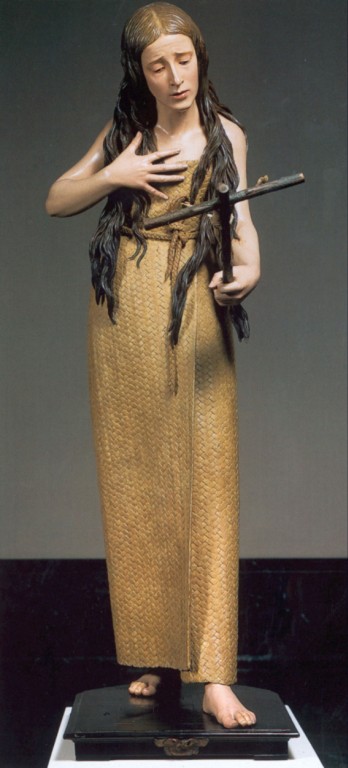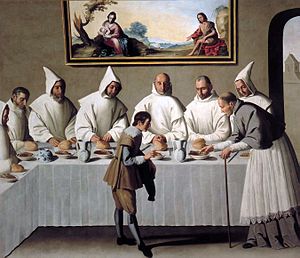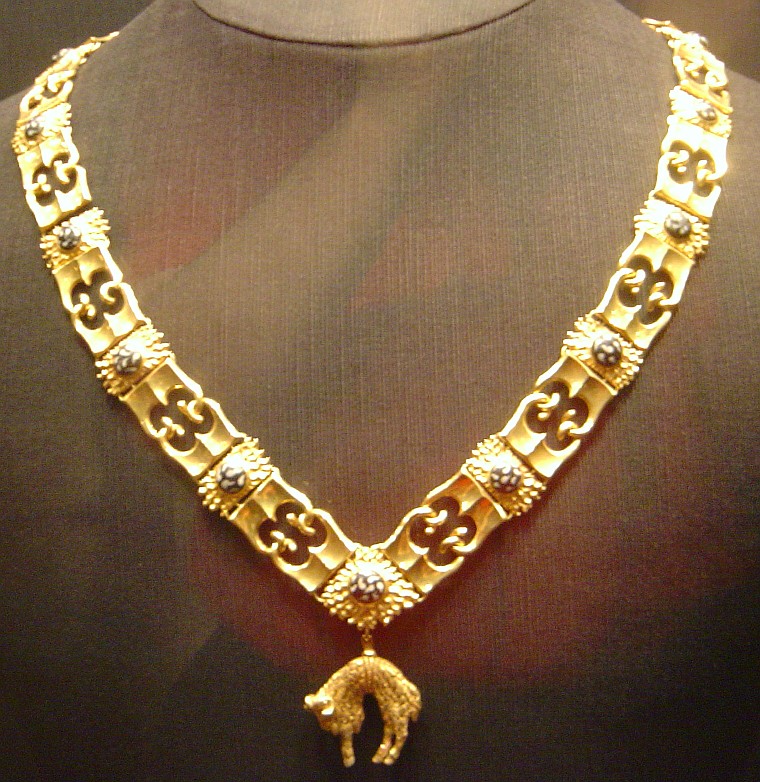Today in social science Paqui has explained to me like to enter in the blog to create a new journal.
At the beginning of the class Paqui has started saying to us that we have satrted with the contents of art in the Baroque period. All of contents enter in the exam of the next Monday.
She has said us that in contrast with the social, economic and political crisis, the 17th century was a golden period (Golden Century) for culture, especially in literature and painting.
In ART:
Architecture: the main fecture was decorative exuberance, in both the interior and the extirior of the buildings. The main works of art were churches and main squares, like the ones in Madrid and Salamanca.
the overelaborated style created by José the Churriguera was called "churriqueresque".
The main architects were:
José the Churriguera: Altarpiece of San Esteban in Salamanca
Works: Altarpiece of the Convent of San Esteban in SalamancaAuthor: José de Churriguera (1665-1725)Date: Siglo XVIII (1692)Style: Baroque national current (churrigueresco)Technique: Gold wood
Pedro de Ribera: Old Hospice in Madrid

Antonio Casas Novoa: Facade of the Obradoiro in the cathedral of Santiago of Compostela

Alberto Churriguera: Main square of Salamanca

HORROR VACUI: fear to void (horror al vacio) all the space available is decorated.
Sculpture: the main characteristics that Paqui has explained were: the subjects continued to be religious and the material was polychromed wood. The main works of art were altarpieces and images for processions. Realism and drama were used profusely: wounds, blood, expresions of suffering and pain...
The main sculptors were:
Gregorio Fernández: Pietá--- is a very realistic sculture.
Juan Martinez Montañés: Saint Hieronymus
Pedro de Mena: Penitent Magdalen

Alonso Cano: Immaculate Conception

Francisco Salzillo: Processional floats for the Holy Week

Later, Paqui has explained the painting
Painting: ther were exceptional painters in the 17th century. Their common links were realism and religiosity. the main commissioners were the king and the Church. Oil and canvas, contrasts of light and shadow, foreshortened figures and complex compositions.
The main painters were:
José de Ribera:
- Martyrdom of Saint Philip (or Saint Sebastian, is not clear): the characteristics of this painting were that the body of this Saint form an X, there were contrasts of lights and shadows .And it has several colours.
- The Clubfooted boy: was a realistic painting. The author expresses that all real should not be beatiful.

-Archimedes: was a realism paint. the man have not the theeth.Contrast between the light and shadows.

Francisco de Ribalta:
-Christ embracing Saint Bernard: It is the most important paint of this author. There was a big contrasts of ilumineted part and dark part. Realism and religious.
- Christ with the cross: there were different planes. There was a perspective.

Francisco de Zurbarán:
- Saint Serapion

- Saint Hugo of Grenoble: the history of this paint was that a comunity of months should disscus if he eating meat during Lent. At the next morning the meat had become ashes.

Bartolomé Esteban Murillo:
- The Holy Fanily with a bird: In the paint we can saw a normal family. the baby has a canary in his hand, the women was eating an apple, they appear to be a happy family.

Juan Carreño de Miranda:
-Charles II: the eagles in the background and the lions in the table represent the real family.

Diego Silva and Velázquez:
Velázquez: He watching other painters to work when he was in the warehause. Rubens recommended him to go to Italy to improve as a painter. He being a craftsman to be recognized as an artist. When he was in sevilla the paint the christ in the house of Mary and Marta. In this paint we can saw shows, the main things in the background and the foreground secondary.
Also paint the sevilla Waterseller with different shades of brown.

Later, the bell has rung and we have gone to the break.
The words that we have added to our glossary today are:
The words that we have added to our glossary today are:
Processional float: paso de Semana Santa
would: herida
clubfooted: patizambo
pottery: cerámica , loza
Golden Fleece: Toisón de Oro

Decoration: condecoración
warehouse: almacén.


4 comments:
Hi Andrea
I think that you hava writen a raly complete journal but I hav found some litle mistakes like
extirior- exterior
break-break time
but so good
see you!!!
Hi Andrea. I like your journal because it's very complete and it has a lot of interesting pictures. I have found some mistakes, especially with the capital letters after the full stop. The rest of the mistakes I have found are:
-Iluminated -> iluminated.
-Ther-> There.
You can include the sources of the images and some vocabulary, such as:
-Horror Vacui: fear to void (horror al vacío).
-Waterseller: aguador.
This is all, see you!
Hello Andrea:
Apart from the mistakes Jesús and María have mentioned, there are some more related to grammar and vocabulary. Some of them, as usual, are very basic errors. Check before editing your comments.
- Today in social science Paqui has explained to me how to enter the blog to create a new journal.
At the beginning of the class Paqui has started saying to us that we have started with the contents of art in the Baroque period. All of contents are going to be part of the exam next Monday.
She has saidto
- exterior
- Date 18th century
- -Archimedes: itwas a realistic painting. the man has not teeth
- There was a big contrast between the iluminated part and dark part.
- the history of this paint was that a comunity of months discussed if they should eat meat during Lent. The next morning the meat had become ashes.
- In the paint we can see a normal family. the baby has a canary in his hand, the woman is eating an apple, they appear to be a happy family.
- Velázquez: He watched other painters to work when he was in the warehouse. Rubens recommended him to go to Italy to improve as a painter
- I don’t understand the sentence: He being a craftsman to be recognized as an artist.
- When he was in Sevilla he painted the christ in the house of Mary and Marta. In this paint we can see
- What do you mean with “shows”?
- He also painted Sevilla Waterseller with different shades of brown.
Wound: herida
Hello everybody,
Andrea, remember that you have to include the sources of the pictures. And the names of the art works have to be in Italic font
And these are my corrections:
- has started saying to us that we were going to study the contents of art in the Baroque period
- Architecture: the main feature
- Churrigueresque in capital letters
- José de Churriguera.
- The technique used in the Altarpice of San Esteban is gold leaf (pan de oro). The Horror Vacui (fear to void) can be seen in this work of art. You can change the definition of Horror Vacui here.
- expressions of suffering and pain...
- As María has said, there were exceptional painters
- oil on canvas
- or Saint Sebastian, it's not clear)... the body of this saint forms
- The author expresses that reality is not always beatiful.
- Archimedes: it was a realistic painting. The man has no teeth and there is contrast between the light and shadows.
- the most important painting of this author. "Paint" is the material you use to paint a "painting"
- There was a big contrast(s) between the illuminated part and the dark part. And it's also a realistic and religious painting
- Christ with the Cross: there were different grounds, created with different foreshortened figures. You can add here that this painting shows Caravaggio's influence in the use of light and the complex composition.
- Saint Hugo of Grenoble in the Carthusians Refectory: the history of this painting was that a community of monks ... and after this, Cristina's correction of the sentence.
- the lions belowthe table represent the power of the Hispanic Empire
- Diego de Silva and Velázquez:You could add that he was from Seville and started working there, but later he moved to Madrid, recommended by the Count- Duke of OLivares, and started working for Philip IV. And after this, you sholud say that in the royal palace he could see the collection of paintings the royal family had in the warehouse and this completely changed his style.
- This sentence "He being a craftsman to be recognized as an artist" has no sense. You should write that he didn't want to be considered as a craftsman (as painters were), but as an artist, and for his whole life, he struggled to be considered as such.
- Christ in the House of Mary and Martha. In this painting we can see/observe that the main scene happens and the secondary scene in the
foreground
- The Waterseller of Seville. You could add that this painting is considered to be a representation of the three ages of life.
- Finally, instead of "Later".
That's all. Good work, but you have to pay attention to spelling and verbs, as Cristina has said. See you!
Post a Comment